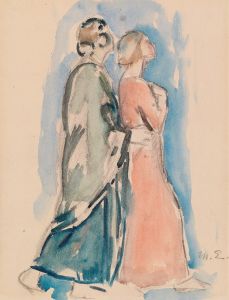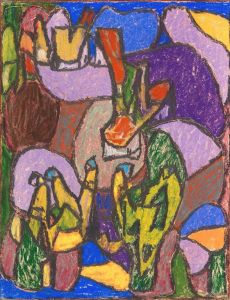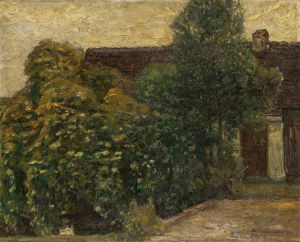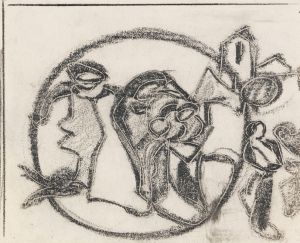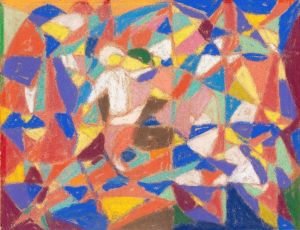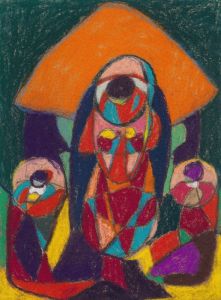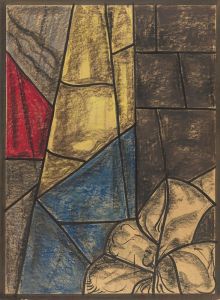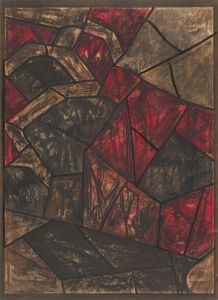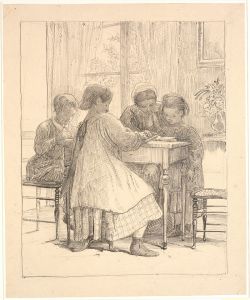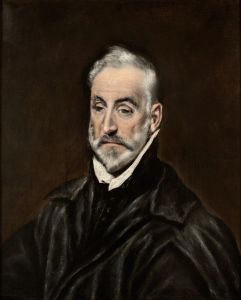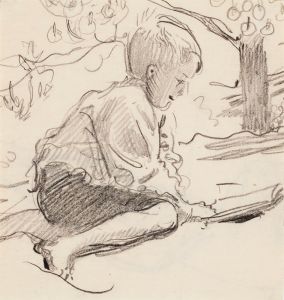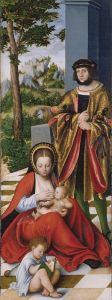
Lesende
A hand-painted replica of Adolf Hölzel’s masterpiece Lesende, meticulously crafted by professional artists to capture the true essence of the original. Each piece is created with museum-quality canvas and rare mineral pigments, carefully painted by experienced artists with delicate brushstrokes and rich, layered colors to perfectly recreate the texture of the original artwork. Unlike machine-printed reproductions, this hand-painted version brings the painting to life, infused with the artist’s emotions and skill in every stroke. Whether for personal collection or home decoration, it instantly elevates the artistic atmosphere of any space.
Adolf Hölzel was a German painter and art theoretician, born on May 13, 1853, in Olmütz, Moravia (now Olomouc, Czech Republic), and died on October 17, 1934, in Stuttgart, Germany. He is known for his contributions to modern art and his role as a teacher, influencing many future artists. One of his notable works is "Lesende," which translates to "Reading Woman" in English.
"Lesende" is a painting that exemplifies Hölzel's transition from Impressionism to a more abstract style. The painting depicts a woman engrossed in reading, a common subject in art that conveys a sense of introspection and tranquility. Hölzel's approach to this theme is distinctive due to his use of color and form, which reflect his theoretical explorations into the spiritual and emotional effects of color.
Hölzel was a pioneer in the use of color theory in painting. He believed that colors could evoke emotions and spiritual experiences, a concept that he integrated into his teaching and artistic practice. In "Lesende," this is evident through the harmonious yet dynamic use of colors, which create a vibrant and contemplative atmosphere. The painting does not merely represent a woman reading; it also invites the viewer to experience the serene and meditative state associated with the act of reading.
Throughout his career, Hölzel was associated with several art movements and institutions. He was a member of the Munich Secession and later became a professor at the Academy of Fine Arts in Stuttgart. His teaching methods were innovative, emphasizing the importance of individual creativity and the expressive potential of color and form. Among his students were notable artists such as Oskar Schlemmer, Johannes Itten, and Willi Baumeister, who would go on to become influential figures in the Bauhaus movement and modern art.
"Lesende" reflects Hölzel's mature style, where he moved away from the detailed realism of his earlier works towards a more abstract and expressive use of color and form. This painting is a testament to his belief in the spiritual power of art and his commitment to exploring new artistic frontiers. The composition is balanced yet dynamic, with the figure of the woman integrated into a harmonious interplay of colors and shapes.
Hölzel's contributions to art extend beyond his paintings. His theoretical writings and teachings have had a lasting impact on the development of modern art. He advocated for the autonomy of color and form, arguing that they should not merely serve to depict reality but should be used to express deeper emotional and spiritual truths. This philosophy is evident in "Lesende," where the use of color transcends mere representation and becomes a vehicle for conveying the inner world of the subject and the artist.
In summary, "Lesende" by Adolf Hölzel is a significant work that captures the essence of his artistic philosophy and his innovative use of color. It stands as a testament to his influence on modern art and his role as a pioneer in the exploration of the expressive potential of color and form. Through this painting, Hölzel invites viewers to experience the meditative and introspective qualities of reading, enhanced by his unique approach to color and composition.





